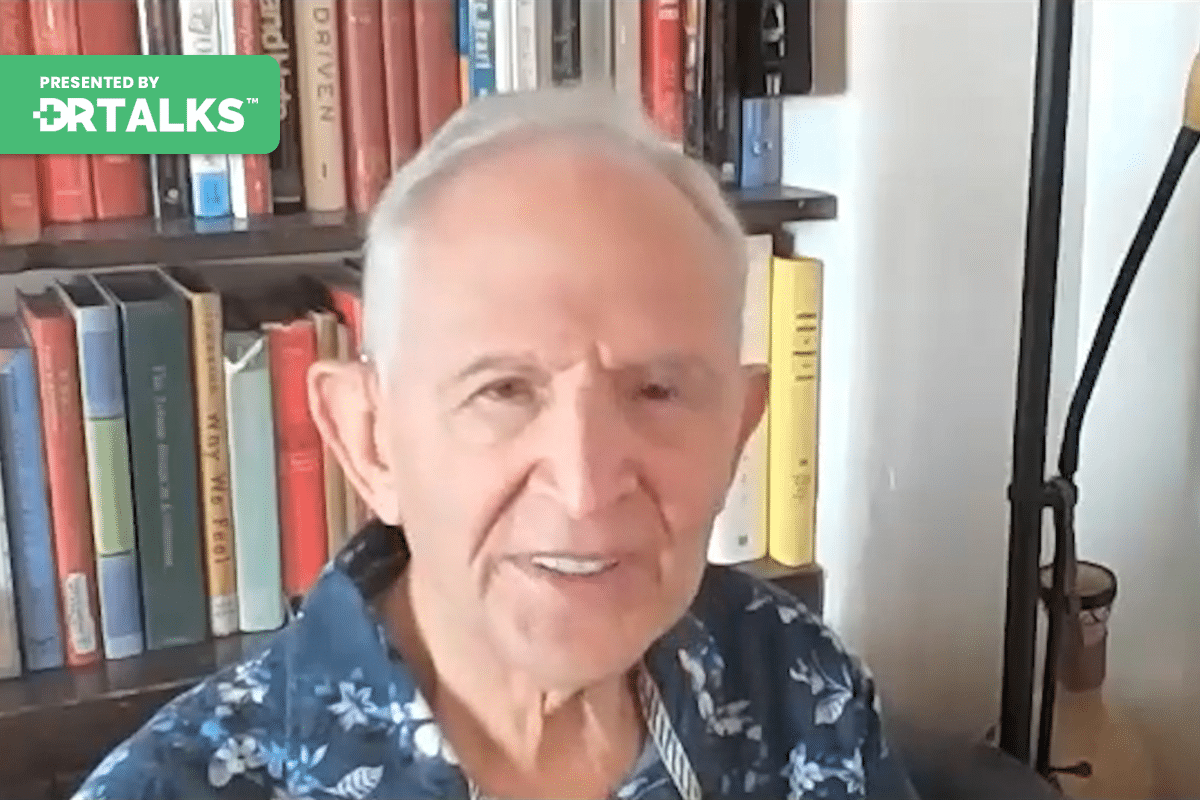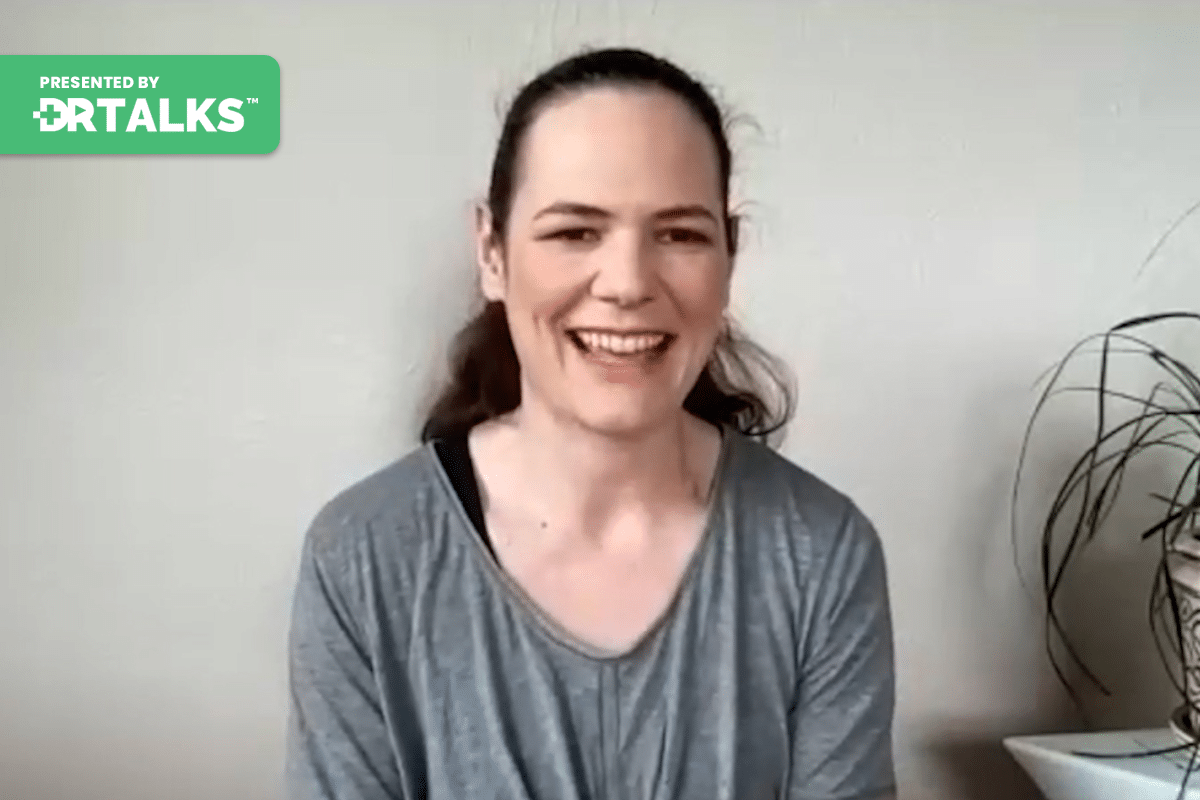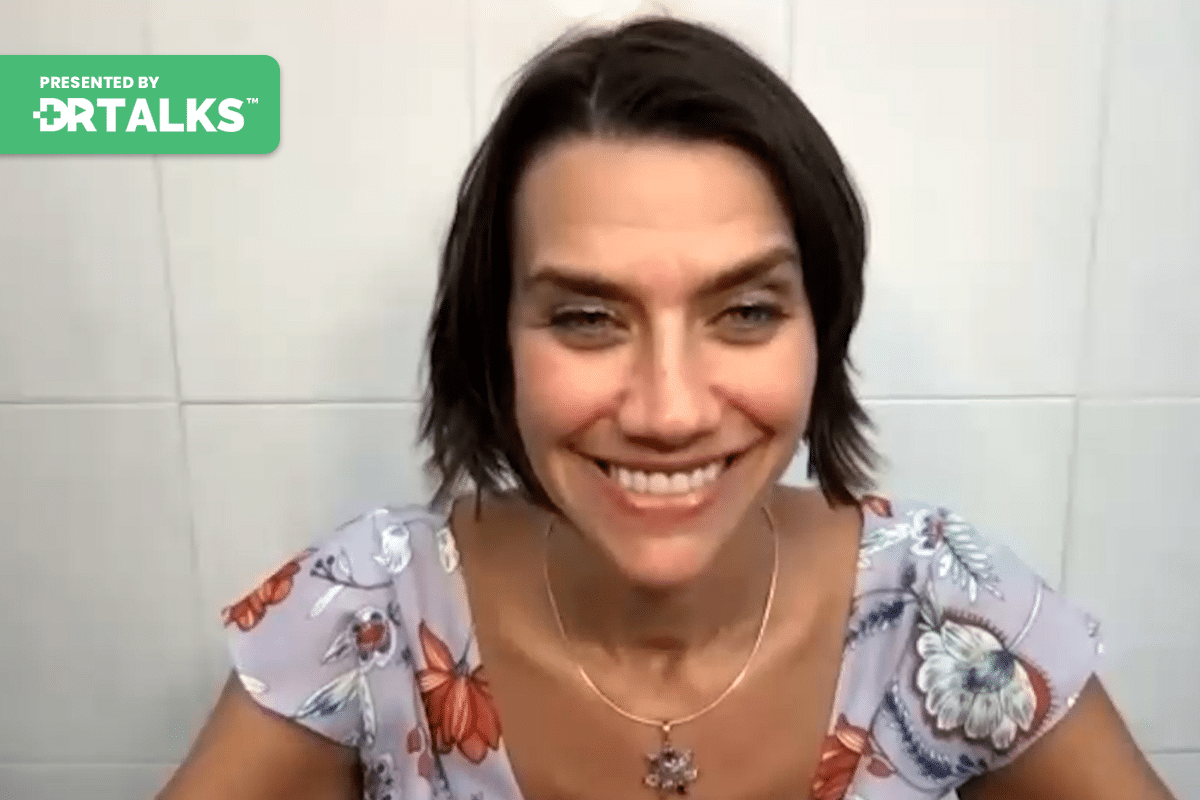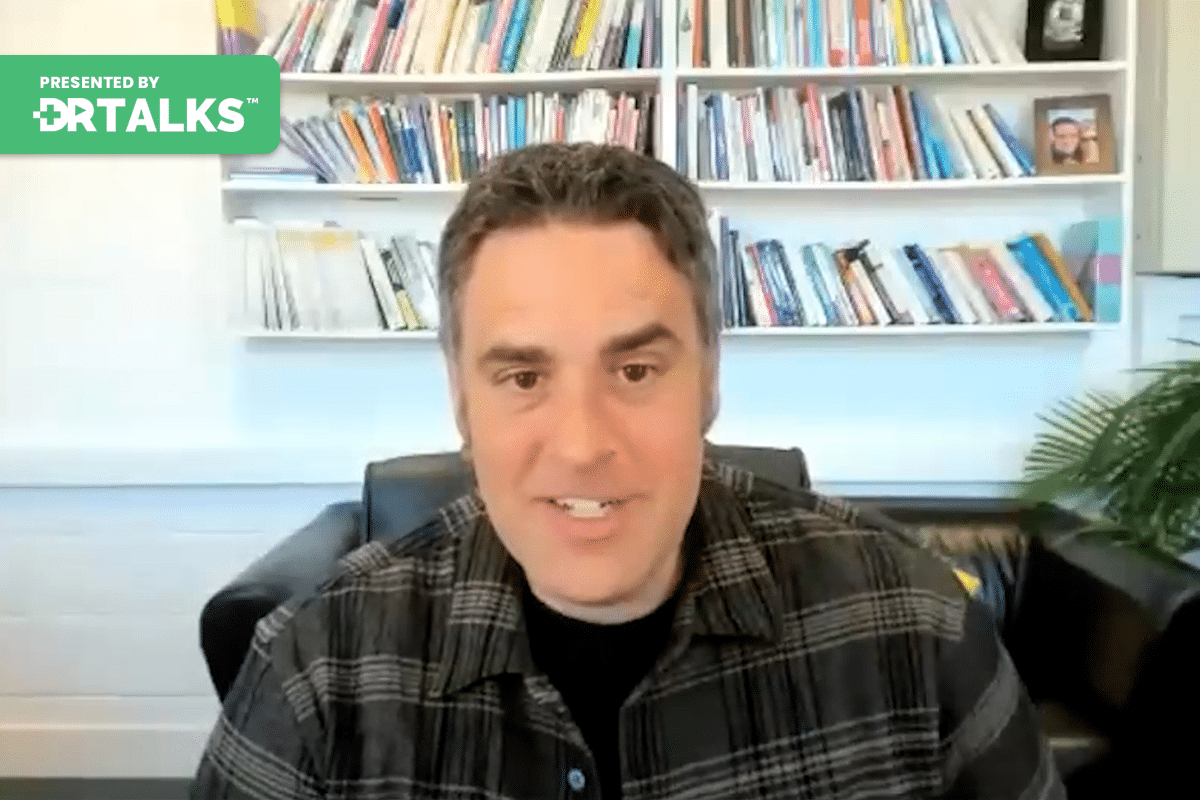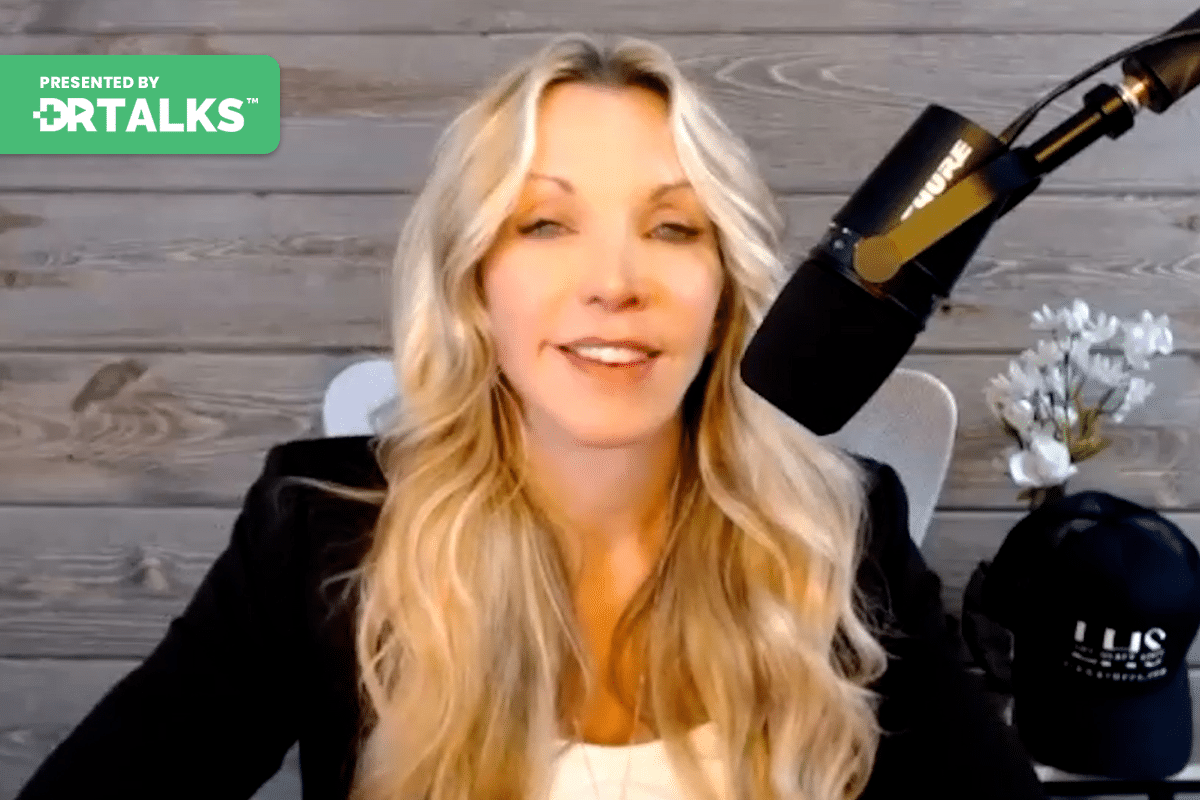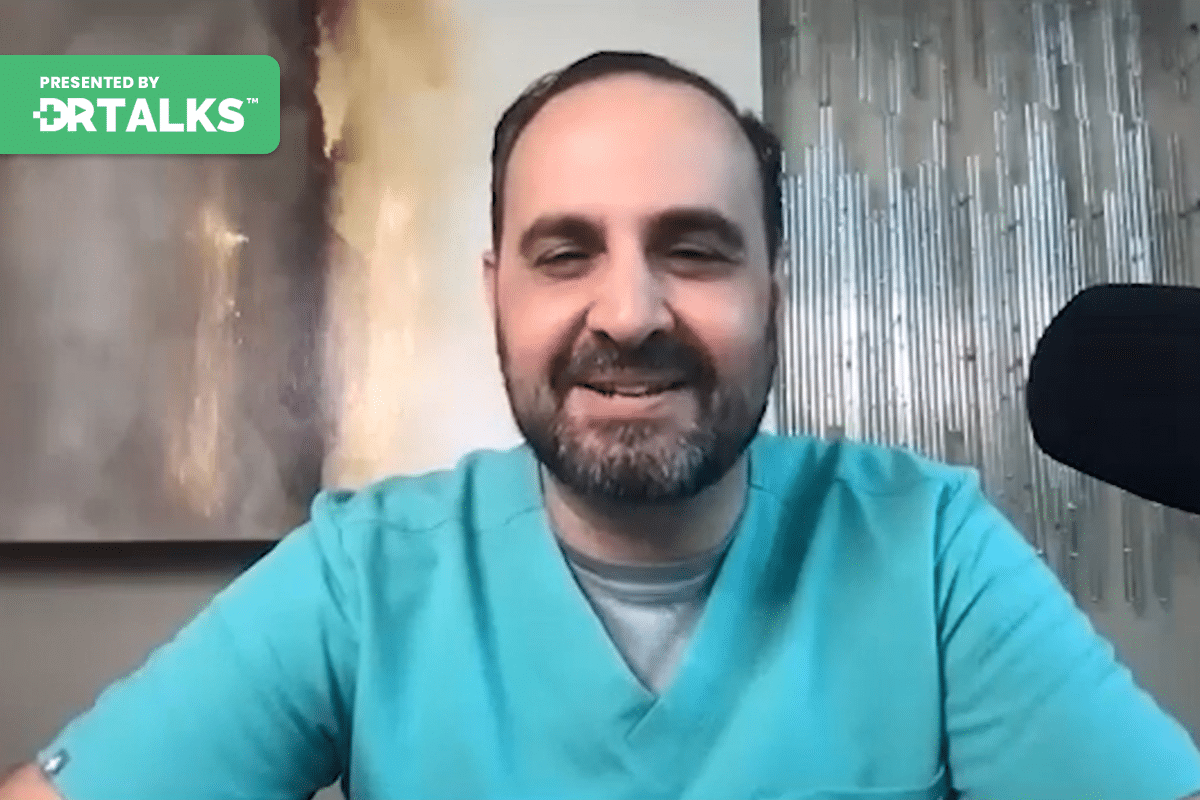Join the discussion below
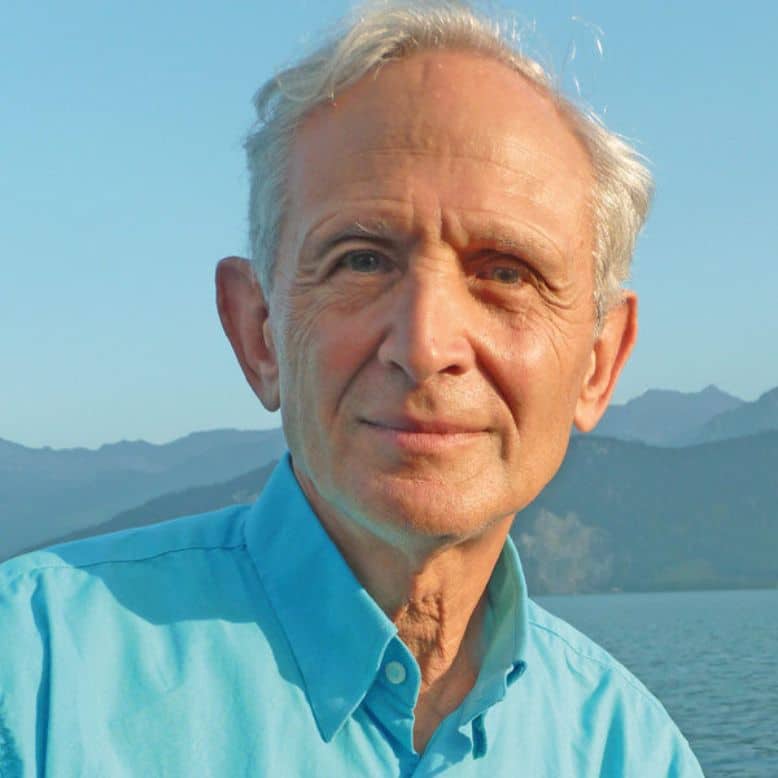
"Trauma therapy for the future can be more important than trauma therapy for the past.” — Dr. Levine As a young child, I was endlessly fascinated by natural phenomena. Indeed, my mother described how I, by the age of ten, inadvertently discovered Newton's first law and Archimedes' law of fluid... Read More
- Discover the common root of all syndromes and their connection to trauma responses
- Grasp the principles of working somatically with syndromes, promoting healing and balance
- Understand the potential concerns of traditional breathwork when dealing with syndromes
Related Topics
Acupuncture, Anxiety, Autonomic Dysregulation, Autonomic Nervous System, Biology, Chinese Medicine, Community, Core Dysregulation, Daily Physical Pain, Depression, Dysregulation, Energy Levels, Event, Fibromyalgia, Gi Symptoms, Healing, Healing Journey, Homeopathy, Hypothalamic-pituitary Dysregulation, Irritable Bowel, Joy, Long Covid, Lupus, Migraines, Polyvagal Theory, Sense Of Safety, Sleep Issues, Somatic Work, Syndromes, Thoughts And Beliefs, Trauma, Trauma ResponseAimie Apigian, MD, MS, MPH
Welcome to this interview on the Biology of Trauma Summit 3.0. We’re talking about the trauma disease connection, and I am so excited to bring you this interview on this somatic work and specifically the somatic work around syndromes now syndromes specifically, we always will have the autonomic nervous system as the element that is driving those symptoms so that no matter which syndrome you have, the root cause of all of them comes back to this autonomic nervous system and being able to learn how to shift those states. This is something that is very, very near and dear to my heart, because it is one of the pieces that was huge for me in my healing journey. In fact, I don’t think I know that I would not be where I am today and being able to even do what I do and even have gone through the rest of my medical training. If I had not learned this somatic piece and been able to study with Dr. Peter Levine, so that now what I share is that there are three essential elements or pillars to one’s healing journey and whatever modalities you use to fit and get these three elements in.
I think is fine, but you have to get these three elements in. Let me share with you those three elements, because it will be a great introduction to this conversation on syndromes and why we have to do this work with syndromes. These are my three elements to the healing journey essential. Now there are other modalities are helpful, but these are essential. Meaning if you don’t get one of these pieces, then you won’t reach your full potential on your healing journey. We have the biology piece and we are here discussing a lot of that biology piece, which includes the effects of trauma on our biology.
And now that biology will keep us stuck in a trauma response, there are the thoughts and the beliefs. And we had, in fact, Dr. Richard Schwartz come and talk to us. His interview on parts work and why are narratives and the thoughts and beliefs can be a contributing factor to keeping us stuck in our physical illnesses that are a reflection of the trauma response? And then we have this body piece. And for me, this body piece is the somatic work. And somatic work for me refers to the tissues, the body and the body holds memories. It’s not just our brain. We have a whole implicit memory that’s in our body. And as I started the pieces together, I came across also Dr. Porges, work with the polyvagal theory. But even before that I had started to map out my own energy levels as I was trying to figure out what was wrong, why was my body doing this and what did I need to do to get my body back into a place of health? And since I didn’t know what was wrong yet, and I did not have any answers from my colleagues who were in medicine, I was a general surgery resident at the time. Then that’s when I knew that I needed to start with understanding what was happening. And in that process I mapped out my energy levels. And it’s fascinating to me. Of course, it’s not surprising to me, but it’s fascinating to me that in the process of mapping that out, I essentially mapped out this polyvagal theory and the freeze response that Dr. Peter Levine and Dr. Steve Porges teaches. And so when Dr. Steve Porges invited me to speak at their Polyvagal summit, it was a definite yes. And this is what I shared. I shared with them this graph and this puzzle. Now, for for for what they teach in terms of the polyvagal theory, their graph looks different and even with somatic experience in their graph may look different because this was me before I knew all of this.
This was me even figuring out what was going on in my body so that I could tell that there were different levels of energy in my system. Now, granted, at that time I was never in parasympathetic. That may be a slight exaggeration, but not by much. I was either stressed and really high my anxiety levels or I was an overwhelmed. And I felt this numbness, this emptiness, this heavy weight inside of me. And I could tell that my body would go back and forth between the two. And what I started to notice was what were the triggers that made my system go from this stress response to this low energy response? I didn’t have the words for these states yet. This was just what I noticed. And so this is what I shared at the Polyvagal Summit with Dr. Steve Porges and was able to show that this is how it presents them in these syndromes.
And so what is our way out? I actually start with somatic work and so as a medical physician, I have a lot of things that I want to do with the biology work and yet all of these all of these do affect our biology, but the somatic work allows us to stabilize the nervous system. And so that’s what I do in the 21 day journey. I bring you through a stabilization period, 21 days of teaching you exercises for your autonomic nervous system that will allow you to stable ize your autonomic nervous system. In the process, this starts to change your biology. And if you have a syndrome like what we will talk about in this interview, it will already start to change those so that the numbers coming out of the 21 day journey are quite exciting. We have a 26% decrease in daily physical pain, 28% decrease in GI symptoms, 28% decrease in sleep issues, 30% decrease in anxiety, 30% decrease in depression.
And these are other numbers. So 50% increase in joy. There was also 19% increase in a sense of community and 60% increase in a felt sense of safety. So this is fascinating to be able to see the changes that happen to our biology as a result of this work. And so if you want to come here and read, listen to the stories of people who’ve gone through this journey before, that would be amazing for you to see what is possible, even just as we start with this somatic work. So again, somatic work for me is one of the essential pieces for a healing journey. It’s not just it’s nice. It would be helpful. Somatic work is one of the essential pieces, and for me, it’s where I start everyone not for a long period of time because we have other work to do and they start to act synergistically. But being able to bring in that somatic piece from the very beginning, leading people through a 21 day journey, I also have mentors that I’ve trained who help me lead that. So for those of you who are somatic experience and practitioners, you can become a mentor and help lead the 21 day journey and learn how to do group online somatic work. It’s quite, quite rewarding to see such changes being able to happen in a relatively short amount of time with the right exercise, because of course we follow the essential sequence. So with that, let’s jump into syndromes with Dr. Peter Levine. Now, Dr. Peter Levine hardly needs any introduction. He holds a Ph.D. in medical and biological physics at the University of California at Berkeley. And then in 1978, that’s when he met Dr. Steve Porges.
And they found a common language and common understanding of bottom up approach, which is very much what somatic work as bottom up approach rather than top down approach, and has since become the developer of somatic experiencing is the founder of Burgos Institute of Somatic Education and is the founder and advisor for Somatic Experience Institute. And with that, let’s jump into this interview on syndromes and somatic work. When it comes to syndromes, what would be something that you would want conventional medicine to understand about syndromes?
Peter A Levine, PhD
I mean, you know, syndromes are these symptoms usually physical or often physical that people have and they have no apparent cause. And often they’re sent from doctor to doctor, specialist to specialist. So people have had fibromyalgia, what we would call fibromyalgia, where those people would be referred to a rheumatologist, people with migraines through a neurologist, people with irritable bowel through a gastroenterologist. And you should always I mean, if you’re working with a client, you should always make sure that there’s not a possibility that something else, something medically, physically has occurred. But given the absence of that, the question is then how do you work with people with these kind of mutating symptoms? And even those that are, for example, like lupus, which is pretty common and especially especially among women and, you know, again, it affects any any number of different organs at different times.
And it’s often quite difficult to diagnose, you know, but you have to be able to diagnose it so you can do something about it. Now, there are medical things that you know are done, such as the use of steroids, but, you know, that hopefully is only used for, you know, relatively short periods of time. But what does it take to get at the underlying condition? And in my thinking, my model, this is due to hypothalamic pituitary dysregulation, autonomic dysregulation, sometimes called disorder. No, Mir or least that was the name given to it in the late 1940s. But again, they rarely can find anything medically wrong. And you should try anything, of course, if it’s within reason. You know, sometimes people often people seek people who are, oh, what do I want to say? You know, people get help, for example, with so-called alternative methods. So acupuncture, Chinese medicine, homoeopathy and so forth. And it’s of course, it’s always good to find more than one thing, because then there will often synergize. So if they, you know, if they get some kind of support thing from Chinese medicine, acupuncture, homeopathy, then the work you can do with them, but I would do with them with somatic experiencing would be really to work with the core dysregulation and to find a way to bring it back into balance.
Aimie Apigian, MD, MS, MPH
So when you’re working with someone with a syndrome, are you looking for an event that would have caused initial dysregulation or is that not important to you in your just starting with where their system is at right now with the dysregulation?
Peter A Levine, PhD
Right. Well, it’s not that it’s not important to me. It is important to me. And very frequently something does show up. But in a way, I don’t go looking for it. I just wait for it to make its appearance. So that’s you know, that’s pretty common. A lot of times, people, before they develop that syndrome, like, for example, lupus, they were also very anxious or depressed, you know, and again, and have trauma histories, especially early trauma histories. But you have to be careful because we don’t want to make it seem like this is what you have, this disorder, you know, because, again, these things are multifactorial. They you know, it’s not just due to one, one event or even one kind of, you know, experience. So and what I work in working with people with long COVID, you know, almost always something comes up just around the time that they were diagnosed, you know, and again, I don’t make a big deal of it, but I certainly notice.
Aimie Apigian, MD, MS, MPH
And it’s fascinating to see some of the articles that are coming out by Dr. Steve Porges and his team lately around just this idea of the Dishonored NAMI with Long-Covid and even with diagnosis around COVID and how those who have the autonomic dysregulation actually appear to have more risk around COVID and more long COVID.
Peter A Levine, PhD
Yeah, definitely. Definitely. Yeah, yeah.
Aimie Apigian, MD, MS, MPH
I’m wondering if you see the same thing with Potts, because that has also been a syndrome that a lot of people I noticed lately, hey, this seems to be on the rise.
Peter A Levine, PhD
Talking about postural orthostatic tachycardia syndrome. Yeah. Again, that’s another very common play out of this kind of, you know, early, early trauma. But again, you know, you don’t want to make the person feel like somehow it’s their fault because they have this trauma and have it. It’s obvious. But we have to realize that it is definitely a significant factor, you know, and Potts, for example, along with so many symptoms that were originally attributed to this, are we’re all about this on and on. We’re kind of had the people with this on and I met with said that it was had her heredity Terry you know and there is not anything that doesn’t have some kind of a to her you know kind of a yeah yeah. Some kind of a genetic factor. I mean, people who have migraines, certainly people in their family may have had migraines. People who have heart disease may have had people in their family with heart disease, you know, and so forth. So, so anyhow, you know, working to reestablish core regulation and then to track their symptoms as they hopefully or often do abate over time.
Aimie Apigian, MD, MS, MPH
So with the people that you’ve worked with, when you are kind of working with their system, what’s the sense that you get of how many years this has been building up for them in terms of chronic stress and the trauma?
Peter A Levine, PhD
Right. Yeah, well, that’s a good that’s an important question. You know, again, so often people, you know, I’ve had really early childhood adversity. Think about the, you know, the a study a study of the causes that the.
Aimie Apigian, MD, MS, MPH
Adverse childhood adverse.
Peter A Levine, PhD
Childhood experience and and but there are many, many other factors that but certainly it’s pretty rare at this point, I think pretty well accepted that early events like this or early LAX, you know, difficulties really have a long term effect on people and certainly in my opinion, only that these very often contribute to these kinds of syndromes. I just came across an article about lupus, and people with lupus, you know, often have trauma histories, very frequently have trauma histories, whether they want to acknowledge it or not. And even single small events, PTSD kind of things. And also result, you know, in, you know, in these in parts and other syndromes, we kind of have to sometimes be following the Lilly putting around for sure.
Aimie Apigian, MD, MS, MPH
And I’m wondering if you’ve noticed any difference in those people who recognize and acknowledge their trauma history versus those who do acknowledge it and the degree of symptoms that.
Peter A Levine, PhD
They don’t acknowledge.
Aimie Apigian, MD, MS, MPH
Syndrome.
Peter A Levine, PhD
Those who do and those who die.
Aimie Apigian, MD, MS, MPH
Yeah. Yeah. I’m wondering if just even acknowledging their trauma history somehow has an impact on the degree of symptoms that they have in their.
Peter A Levine, PhD
I think so, especially if they’re acknowledging it to somebody that they trust. Yeah. Not just acknowledging it to themselves, which is an important first step. But, you know, I think what’s really important is not just what happened to the person, but what they hold inside in the absence of that connected, sympathetic, present, other. And you know that that can make a really, really big difference to have that caring presence there. Absolutely.
Aimie Apigian, MD, MS, MPH
And so as we look on the medical side of things and we see the trends, the numbers in lupus, for example, increasing and continuing to increase over the years significantly, even in young people and the African American population. And what would you like? What would be your message for your family physician, your regular family, your internal physician who’s seeing these patients coming in?
Peter A Levine, PhD
I mean, curious, proactive, somebody who can work with those underlying factors. And, you know, and that may mean referring them to, quote, alternative practitioners, but, you know, I mean, we’re asking the physicians to really look and see if there’s likely to be some kind of a, you know, organic cause. But again, when there isn’t and nothing shows up, I think it’s really important that and this does make a difference on the physician that, you know, they don’t start with saying, well, you have the August trauma. That’s where you’re having a problem by saying, you know, there’s things that may be going on that’s underneath here that if we can heal, that we can find inner balance, that that can make a big difference. And here are some referrals of people, practitioners who have, you know, have and have been helping improve some of my other patients.
Aimie Apigian, MD, MS, MPH
And you use that word balance quite a bit when you talk about the work, the somatic work that you do with the syndromes. Tell us more about balance and what that means to be balancing the system and then even tuning what does it mean to tune the system in relationship to.
Peter A Levine, PhD
It is a little bit complicated. But you know, when people are dysregulated, everything seems to be out of order in the external world. But really it’s what’s going on inside and, you know, a lot of what we do in SD, for example, is about restoring regulation, doing inner regulation. And again, while you’re doing that, it’s very common. It’s not at all uncommon that memories come up, maybe not conscious memories, but, you know, implicit memories, emotional memories are procedural memories, body memories and so forth, you know. And that’s what we’re stuck with these kind of symptoms. We kind of have to work around them so that they’re no longer ticking dust in our face. Yeah.
Aimie Apigian, MD, MS, MPH
And when I think of kicking dust in the face, I what I’ve seen is some of the top down approaches that conventional medicine can suggest for these patients because that’s the tools that they know. So there’s absolutely no judgment. But that’s where I’ve seen some of these conditions, symptoms, syndromes even flare up because we’re trying we’re just stirring things up in the body without having a way to resolve it and balance it and regulate it.
Peter A Levine, PhD
That’s right. That’s right. Because just staring it up is not going to help. It might even exacerbate things. So, you know, I mean, you really need a skilled practitioner. Yeah.
Aimie Apigian, MD, MS, MPH
And for those. Yeah. For those in the audience who are somatic experience in practitioners, what would be for them? A word of this is a way that we do differently working with these syndromes and just your general write coming in for SC here.
Peter A Levine, PhD
Actually next week I’m starting a class on syndromes and particular emphasis on post-COVID symptom syndromes and you have to work very precisely, very delicately. You know, a principal and somatic experiencing is titration. You don’t really push the person into their traumas, you just help them to touch into them and then to integrate it into their body, into their hands, their experience. So you have to be super. So I call this ultra titration. So when you’re working with the person, as soon as there’s been a little shift, that’s when I might say my famous, my infamous. That’s it. I’m just noticing that. What’s that feel like? So again, is being very delicate, being very precise and gentle.
Aimie Apigian, MD, MS, MPH
And I’m wondering, what are some of the things that you notice around the breath with people who have syndromes, especially the long COVID? Are there certain pattern that you’ve seen?
Peter A Levine, PhD
That’s another juicy question. You know, a lot of the exercises that people do is they try to get people to breathe heavily. I mean, because, you know, if they’re not fit, if they’re fatigued means they’re not getting enough oxygen. So if they’re not getting enough oxygen, you want them to breathe more fully and this actually can make problem worse. The reason is whether we are breathing over breathing or on the breathing. So hyper ventilation or hypo ventilation that decreases the efficiency of the oxygen being picked up by this by the red blood cells and taken to the cells and to the mitochondria. And so you want to find a normal breathing. And that’s one of the reasons I developed the use of the VO sound, because when you’re not trying to correct the breathing, but you’re trying to reestablish a normal respiratory rhythm. So that’s, I think, one of the very important points.
Aimie Apigian, MD, MS, MPH
And by restoring the kind of the where the body in the system is at that time with the breath, then allows the body to go at its own pace and to be able to not go deeper or into more body memories than perhaps the body is ready to with the work around these syndromes.
Peter A Levine, PhD
Exactly. And again, you have to be delicate about this. You have to really be precise. You know, in my the training that’s coming up, you know, practicing different ways when there’s the tiniest shift in the person’s body, their autonomic nervous system, their breath, their posture at the very, very beginning, that’s fine. I’ll say something like, that’s it. That’s noticing that. What do you mean, noticing, Mark? Well, just whatever happened just now, just be curious and, you know, and then you’ve enlisted them. If you can enlist the person’s curiosity, you’re halfway there. You know the expression about the cap, curiosity. What do you know about that?
Aimie Apigian, MD, MS, MPH
Curiosity killed the cat, is what the saying says.
Peter A Levine, PhD
No, no, no, no, no, no, no, no. Curiosity led the cat to realize its highest potential. You again just touch into these sensations and not going in too far and too fast because again, I think you can overwhelm the autonomic nervous system, overwhelm the body, and that never helps it, you know, usually makes things worse. So again, you just gentle into this, you know, into these holdings and and then see what develops, see what comes out and yeah.
Aimie Apigian, MD, MS, MPH
What are the other, I don’t know, mistakes that you see some somatic experience in practitioners doing around syndromes without knowing better. Yeah. We would want to know better.
Peter A Levine, PhD
Well I mean I can think of a couple of things right off, you know, changing their breathing voluntarily because breathing is not meant to be voluntary. It’s an involuntary function and to maybe to try to see what memories might be underlying rather than, you know, just working on the symptoms are they even said maybe better the energy that’s locked in those symptoms because that’s really the key. The energy gets locked in there, it gets compressed against health and people are terrified if it releasing because if it releases all at once, they might easily become overwhelmed. And being overwhelmed, really, the brain can’t distinguish that from the original trauma. So again, it’s really absolutely essential that, yes, touch into these experiences to let them play through. So let the procedural memories integrate complete and let the other kinds of memories, the emotional memories, be there, especially memories of grief and loss. You know, one of the things I’m very curious about in the United States, I call it virulent positivism, where it never stops to admit pain or especially grief that somehow that will make us seem weak. And that’s the last thing we do, but it’s the thing that we have to do. So I think that’s one of the things that also that really takes more, you know, refined work, more precise work, also working with it with some variables like shame that maybe comes up and shame and grief and very often, you know, and linked together. So again, you want again, just if shame does come up, you want to touch into it. And again, in a very gentle way, you know, all of this is about gentle, really.
Aimie Apigian, MD, MS, MPH
And it’s possible for people to not even realize that they have the shame and grief locked into these body syndromes and these symptoms.
Peter A Levine, PhD
Or usually they don’t need it. They don’t, you know, and again, that’s one of the things you may have to sort of gradually bring their attention to. It and create the environment where people are feel safe enough to move into empty grief and where they can be guided, you know, in a in a good way. In a yeah. To catch these. Yeah.
Aimie Apigian, MD, MS, MPH
So do you see that in the Western culture not being able to express grief and perhaps add to that then the social loneliness that a person experiences, even though they may be surrounded by people, actually is contributing to these syndrome.
Peter A Levine, PhD
Yeah, well, right. I mean, so we’re talking about COVID again. So here people who have been isolated have been cut off from friends, you know, with friends. And, you know, that’s painful, especially for care, especially for adolescents. But for all it well, for everyone, you know, kids and adults, you know, they’ve gone through a lot of worry of fear, of lack of loss that they need to have that repaired. And so I would often just really see my initial work as being reparative.
Aimie Apigian, MD, MS, MPH
Though, for someone who’s listening to this. And they’re not the professional, they’re not the somatic experiencing practitioner, they are this person who has one of these syndromes and they’re listening to this and like, Oh, I think this is me that I haven’t been in touch with grief, that I’ve pushed it away. I’m scared of it. I’m scared of doing anything. And I’ve been more focused on the medical side of treating my syndromes and not getting, not getting the progress that I want. What would be the message for them of where to start? The hope and the possibilities for them?
Peter A Levine, PhD
Yeah. This friend of mine is in Switzerland, he’s a Tibetan Buddhist. And so he gave me this little flag to put up. That’s from the Dalai Lama, from His Holiness.
Aimie Apigian, MD, MS, MPH
I’m not sure we can see that.
Peter A Levine, PhD
Oh, you can’t see it. I’ll read it.
Aimie Apigian, MD, MS, MPH
Okay.
Peter A Levine, PhD
Basically says no matter what is going on, never give up. Hmm. That’s it. That’s the essence of it. Mm hmm. Yeah.
Aimie Apigian, MD, MS, MPH
And then it is possible.
Peter A Levine, PhD
Sometimes, you know, it seems like there’s no movement, you know, and then you continue going in and boom. All of a sudden, something really shifts. Shift happens.
Aimie Apigian, MD, MS, MPH
And when we do it in a process where it’s almost where we’re going gentle and the body is being given what it finally needs, that safe place to be able to experience some regulation and that presence of a safe, a safe witness. I feel that magic can happen.
Peter A Levine, PhD
Yeah, well, you know, we’re all seeking safety. And that’s the cynical nun from moving further. I mean, it has to be you have to qualify it as relative safety because there is no such thing as absolute safety. But if there’s enough relative safety, then the therapy is able to help co-create with the client, you know, some sense of openness, of safety, of, you know, kind of being able to give them selves the self hug, exercise and just really knowing what it feels like to have at least some modicum of safety and I wouldn’t advise the work to go on before that’s established.
Aimie Apigian, MD, MS, MPH
Safety really is the necessary first step.
Peter A Levine, PhD
Absolutely. Absolutely. Again, not to have the idea that it’s absolute, okay, we’re doing this this event with Angwin at her house and then going out into the woods with a group of Vietnam vets and women who experienced sexual abuse. And everybody said, don’t do that. That would be totally crazy. But we did it, though, before we went out on this Outward Bound of thing. We met to establish safety. That’s what we wrote to them. That was the year when those fires started in the Berkeley and the Oakland Hills, and then these Asian men with these kind of hats and goats were running up trying to make a fire line. And, of course, the Vietnam vet completely freaked out. Then the women freaked out and we didn’t get off. But fortunately the act, the experience was quite positive. But after that, we don’t use the word absolute safety, relative safety, safety enough to move forward.
Aimie Apigian, MD, MS, MPH
I use that word a lot, Peter. Safe enough. All we’re going is for safe enough.
Peter A Levine, PhD
That’s right. That’s right. Yeah, yeah, yeah. There’s a sort of friends. What’s her name? I can’t remember. So we. We presented together in Switzerland, I think it was last year. She wrote a book called Seeking Safety. She comes from the addiction, you know, community. But again, I think that’s really the point. And that you can’t really neglected or pushing aside and just go on. You know, we have to address it severely.
Aimie Apigian, MD, MS, MPH
I love, love, love this stuff. As a medical physician, it is fascinating to me to have these tools of somatic work in working with syndromes. And this is why I love what I do now to be able to bring in an integrative approach. If this is something that you’re interested in, you can always make a session with a biology of trauma health coach so that they can look at you through that lens of how has chronic stress and trauma affected and is still affecting your symptoms, your condition, so that we can do the trauma piece in order to help you get your health back. But it is fascinating to me to see the value of being able to bring in somatic work when we understand these syndromes and the actual physiology that’s driving them and to me, that brings so much hope. And I hope that that’s what this interview has done for you.
It’s brought you hope that there is so much that we can do, whether it’s you that has a syndrome or someone that you take care of or care for. If you’re a professional or if it’s a loved one, syndromes are a big deal and they are increasing, obviously across the world. And it’s no surprise once we understand the science behind them, don’t forget that you can purchase all of these recordings. I hope to see you in a 21 day journey, but resource yourself with all of these recordings so that you can come back and visit them as many times as you want. Because there is so much depth to these, there’s so much richness, and I want you to be resource and have everything you need and not be stressing yourself out because you’re trying to get everything in during this summit. And with that, I’m your host, Dr. Aimie, for the summit on the biology of Trauma and the Trauma Disease Connection. And I will see you on the next interview.
Downloads

